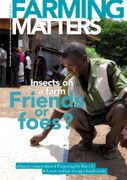Honey bees are amazing creatures, but they are dying by the millions. John Wightman looks at our slow reaction to their disappearance, calling for someone to apply slow response thought processes so as to search for a global solutions. Quoting Einstein, if the bee disappears from the surface of the globe, then man would only have four years of life left.
Honey bees are amazing creatures. They can navigate, communicate, air-condition their hives, detect and segregate contaminated pollen, repel invaders… and collaborate. They pollinate about 90 kinds of crop plants – and of course there is also the honey. But they are dying by the millions.
I wonder if the teachings of Nobel Prize winner Daniel Kahneman can help us understand what is happening. He highlights an unfortunate facet of our psyche: that we react to challenges or threats in two ways. First is a “fast” response, which basically involves (a) denial (“Oh, that can’t be right…”), ( b) doing nothing and hoping the problem will go away, or (c) applying a solution that may have worked for another problem. A second or “slow” response may follow: it is called rational thought. It involves time and effort and the collection and analysis of evidence. Guess which category the majority of decisions fall into.
I have been telling myself that the world population of honey bees just cannot be under threat. Bees are just too important and cannot disappear (= denial). But all the time, more evidence is coming in from all around the world saying “think again”. Beekeepers inspect their hives one day and find the bees have gone. What we now call Colony Collapse Disorder keeps on happening. And more location-specific bee challenges keep on being reported: another species is displacing the honey bee across the Pacific Region; there is a beetle from Africa that destroys honey in Australian hives; a “new” bee parasite was reported in California this year.
But what exactly is happening? There are so many “fast” responses. Some say that the parasitic Varroa mite and/or the pathogens it transmits have mutated. Plausible, but these pathogens have been around forever and are not pandemic. “It must be insecticides”: the neonicotinoids (such as imidacloprid) are certainly implicated. But these products have been available since the 1980s. Why are they only now having an effect? Hives are often moved long distances to pollinate specific crops. Do the bees get pathogen-induced travel stress? Such bee movements have been “normal” for many years. So it must all be due climate change then…?
Please someone – is there an international organisation that can apply slow response thought processes to integrating a search for global solutions? If the bee disappears from the surface of the globe, then man would only have four years of life left. That is what Einstein said, and he was a real slow response thinker.
Text: John Wightman
Based in Australia, John Wightman promotes landscape development and the enhancement of natural control as the basis of sustainable pest management. He has worked on rearranging farming systems across Africa, South-East Asia, and the Pacific.
E-mail: javinm@gmail.com ; intipm@ipmmaleny.com

